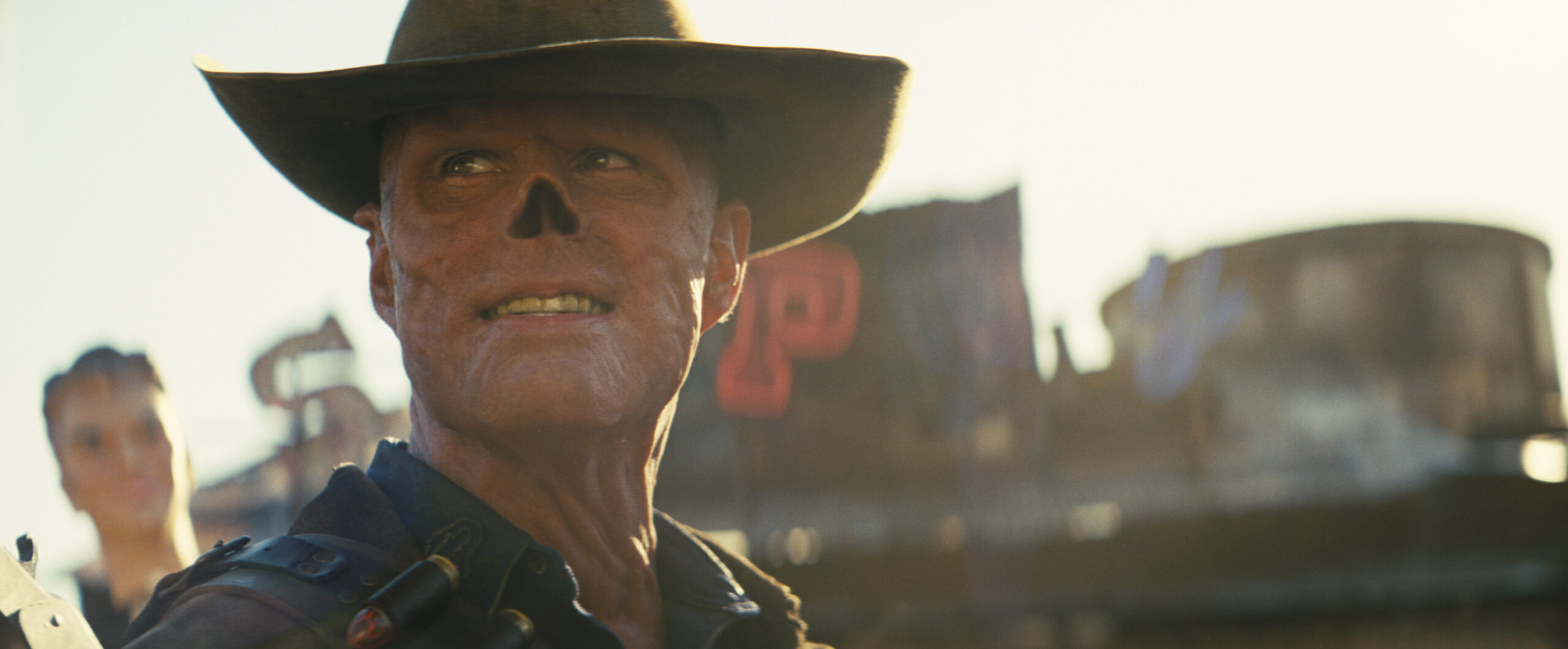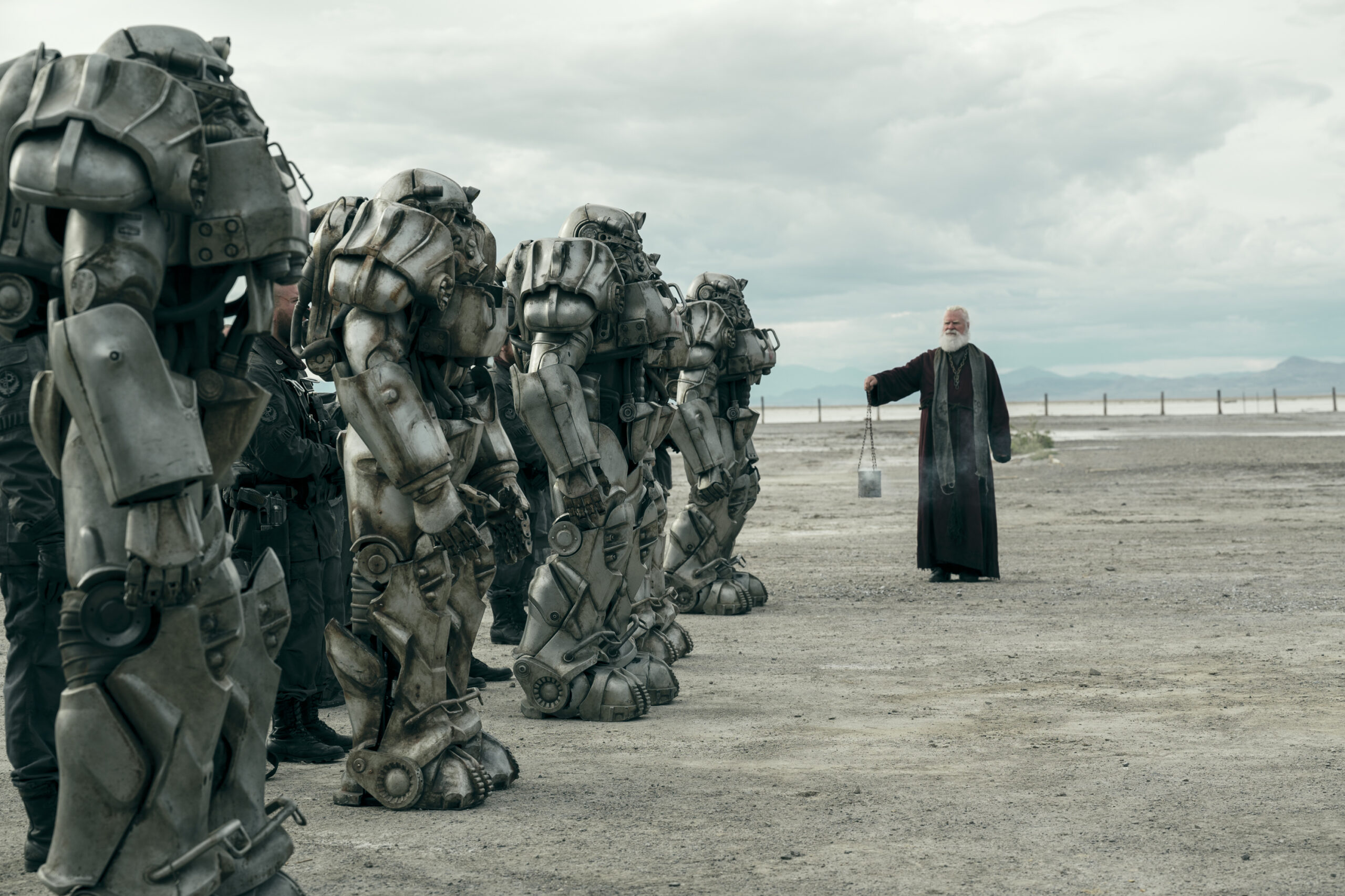Want to hear more from the actors and creators of your favorite shows and films? Subscribe to The Cinema Spot on YouTube for all of our upcoming interviews!
Lead Critic for the site, as well as serving as an editor when needed.
In today’s modern cinema and television landscape, live-action video game adaptations are nearly everywhere, whether it’s HBO/ Max, Netflix, Prime Video, Sony Pictures, or other distribution studios. Unfortunately, the well-executed ones are few and far between. The biggest mistake these projects typically make is whether they each evolve into a movie or television program.
A live-action adaptation of the series Fallout had been in development for some time, with numerous fan-made films already posted online. However, in 2020, Amazon Studios announced that they had begun the process of developing a television series in collaboration with Bethesda Game Studios, the developer of the video game, and Jonathan Nolan and Lisa Joy’s production company, Kilter Films.
Fallout, as described numerous times by both Nolan and Todd Howard, the director of Bethesda, can most definitely be seen as “Fallout 5” for fans of the games. Although, the main plot of the show does borrow several obvious elements from the main plot of Fallout 3. For those who haven’t played the games, this show offers a fantastic first look into the world of Fallout, and several key elements of the lore are easily revealed and explained.
Major spoilers to follow.
The World as We Know It
In the universe of Fallout, American history is mostly identical to reality, except after World War Two, there is an entire verge. In this universe, the transistor, which effectively helped miniaturize technology, was never invented in 1947. Consequently, the culture and the environment essentially remained in the 1950s and ’60s way of living, along with the universe’s own inventions, launching a Nuclear Age of America.
In terms of the stories within the games, and thus the show, the world was destroyed in a nuclear fire in a matter of two to three hours on October 23, 2077. To this day, there has never been a clear-cut answer as to who fired first. Nearly every major city in the United States and several other countries were hit. As this happened, a resource war was raging throughout the world.
In Alaska, America and China had been at the end of a long fight, in which China originally invaded the land. The threat of complete nuclear annihilation was at an all-time high in America as well, and a Second Red Scare had also been sweeping throughout the country. These events resulted in the Great War, and the main story of the games picks up 200 years later.
219 Years Later

Each video game entry is set roughly between six and sixty years apart within the timeline. The Prime Video series, set 219 years after the Great War, in 2296, is the latest entry, roughly nine years after Fallout 4. The first three minutes of this show alone should hook even the most die-hard fans. In that short window, the creators accurately gave the audience a proper feel of pre-war America, but then the bombs drop. The audience can feel almost everything within the scene, and the characters in the world know a nuclear bomb could drop at any moment, but you only know it when you see it. This moment also introduces our first protagonist, Cooper Howard, excellently played by Walton Goggins.
Lucy MacLean and Maximus
After setting the scene of this unbelievable world, we are introduced to our other two protagonists, Lucy MacLean and Maximus, eagerly played by Ella Purnell and Aaron Moten, respectively. MacLean is the perfect protagonist for this show. Purnell legitimately feels like a fish out of water as Lucy in the best way possible. Even her dialogue is perfect because she just says all the wrong things. Yet, being a resident of an underground Vault, Vault 33, she is the most naïve person in the entire Wasteland.
She could feel highly out of place within this story, and it’s perfect. However, her role in the plot is highly similar to the player character of Fallout 3, as both leave their vault to search for a crucial target, that is the same in both stories, and one play style of Fallout 3 almost exactly mirrors Lucy’s decisions. It isn’t really a bother, but hopefully this type of story doesn’t get reused for a different vault protagonist in future seasons of the show.
Maximus has his good and bad moments in the show. Moten plays the character with a certain unsophistication that feels reminiscent of similar military characters within the universe. Maximus is a member of the Brotherhood of Steel. A pseudo-military-type organization founded after the war dedicated to preserving prewar technology. They are a group that has been heavily featured in each entry, so it would’ve been nice for Maximus to be within a different group though. He eventually finds his own way away from the Brotherhood. He seems to want some kind of purpose, but really just needed a couple good friends. His story in a future season could be exciting to return to.
Cooper Howard/ The Ghoul

Howard could potentially be one of the most liked television characters ever. When the audience is reintroduced to Howard, now a bounty hunter in the wasteland, he is known as The Ghoul within the surrounding area of the story. He is, also, in fact, an old ghoul—one of many products of the Great War. Ghouls are humans that have been exposed to too much radiation and are best described as the universe’s version of zombies. They can live for years longer than normal humans in the Wasteland.
Most ghouls are feral, resulting in them attacking anyone that is not a ghoul themselves on sight. Although, many others, like Howard, take time to eventually turn feral. They are mostly human and are heavily discriminated against. Goggins is having the most fun here. The Ghoul is subtly cool, yet extremely menacing, and Goggins has a certain swagger as the character. What could otherwise be a very boring and generic cowboy character, Goggins brings him to life and commands his more chaotic scenes.
The juxtaposition of the three protagonists is brilliant and can also be seen as some kind of class division story. They are each very different but seem to be in the same lane in terms of their end goal. They each want something, or someone, and the respect that comes with completing their quest. Lucy also has a line that can be a direct reference to the COVID-19 pandemic, which was amusing. The reveal of Lucy’s father, Hank (Kyle MacLachlan), being a major player in the destruction of Shady Sands was also an excellent surprise and fits well within the universe.
Respecting What Came Before
Directors/ executive producers Jonathan Nolan and Lisa Joy as well as series developers/ writers Graham Wagner and Geneva Robertson-Dworet seemed to have taken the utmost care when adapting this Prime Video series. Perhaps the most impressive element in the writing is the dialogue. During the pre-war segments, down to the way in which words are used, and even the way people speak and then shifting to the way dialogue is post-war, is brilliant. There is also a hitch with vault dwellers; they’re all so naïve. You can hear it in their speech and even how they hold themselves.
The use of the universe products is great, too. The company that constructed the vaults in which people live, the Vault-Tec Corporation, used nearly every one to conduct some type of experiment, and the conspiracy theories are endless. They fed into this perfectly, which I was looking forward to.

Prime Video Staying True to Fallout Lore
In every scene there is something for everyone to catch. Sometimes, several elements of the lore is also explained rather quickly in dialogue. These conversations are easy to keep up with, and everything just immerses the audience directly into the world, even better than imagined. I didn’t personally see any retcons or issues to fault within the timeline of Fallout either. There is a chalkboard of a timeline of events for the town of Shady Sands present in one scene. While the dates seem to be exact, as someone who put in countless hours of time into Fallout: New Vegas, the board doesn’t go against canon. Arguably, the events discussed there have no impact on the canon, as those events are never explicitly discussed in the game.
The screenwriters also give certain small details an origin, like the voice of Mr. Handy (Matt Berry), or changed small things to make sense for this adaptation, which seem fun. There is so much to take in within this show. I cannot wait to see what happens with future seasons.

Teasing Fallout Season 2 and Beyond
Fallout‘s final two episodes are the best of the season bar none. While it has been acknowledged before, Fallout: New Vegas gets a major Easter Egg in the appearance of Robert House (Rafi Silver), founder and CEO of RobCo, during a pre-war scene. House ends up finding a way to cheat death and becomes a pseudo-savior of the city of Las Vegas during the Great War, with most of the city surviving the bombs. It evolves into “New” Vegas over the years. The same scene also featured representatives from other in-universe organizations such as the Big MT, another defense contractor company and science research center located near Death Valley closer to Nevada. The location serves as downloadable content (DLC) for Fallout: New Vegas. These connections are fantastic.
The final scene of Hank preparing to journey towards New Vegas was perhaps my favorite moment from the entire season as well. It was simply epic to see the camera pan above Hank to reveal one of the greatest locations in the Fallout universe. If this is any consolation for a proposed second season, taking the story to New Vegas is a great decision.
Vault-Tec
The Prime Video series does almost explicitly confirm that Vault-Tec was somewhat heavily involved in the Great War, and this is honestly of no surprise. While there isn’t necessarily a confirmation from any creator on the show or game side, it has always been heavily speculated about their involvement. In the finale, there is a map that shows the locations of all 122 vaults in the United States. This entire scene is somewhat of a revelation for the entire series as a whole and is just great to see overall. This is what makes this show such a great adaptation: it adds to the existing canon, while creating something new and exciting, but also executing it correctly.
Final Thoughts on Prime Video’s Fallout
The Ghoul has a line in Episode Three: “[T]he Wasteland’s got it’s own golden rule… thou shalt get sidetracked by bullshit every goddamn time.” This line almost perfectly sums up the Prime Video series, and makes it seem as if the writers behind the show truly understood the source material. They had just as much fun in the creative process as the fans did playing the games. Fortunately, Fallout can easily be considered one of the live-action best video game adaptations.
4.5/5 stars.
Graham Wagner and Geneva Robertson-Dworet’s Fallout is now streaming via Prime Video!
For more from The Cinema Spot, follow us on Facebook, X/ Twitter, and Instagram!
Lead Critic for the site, as well as serving as an editor when needed.
This article was edited by John Tangalin.
